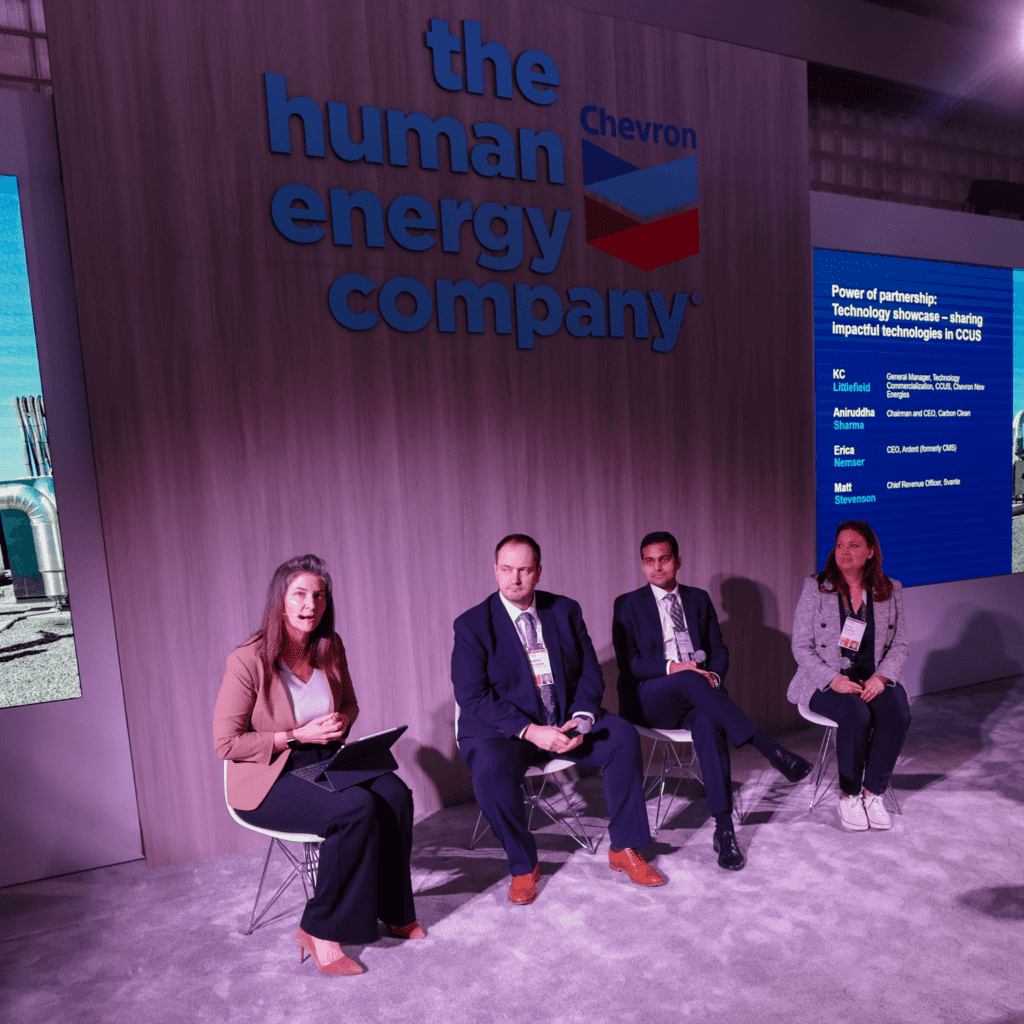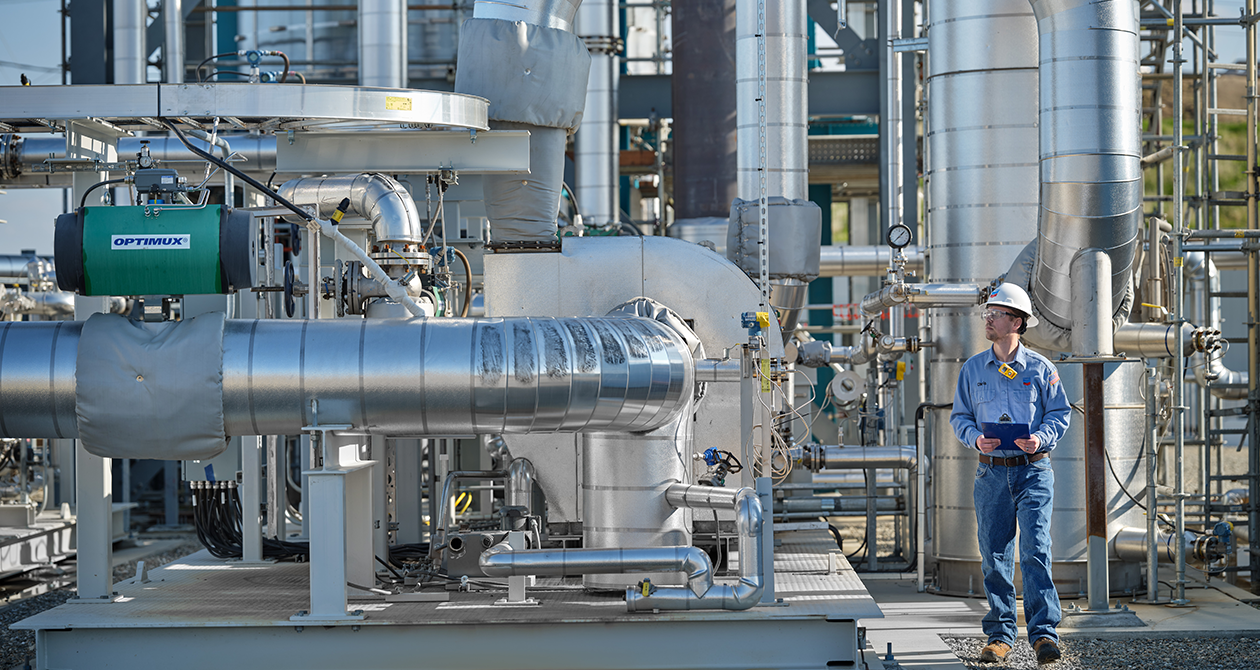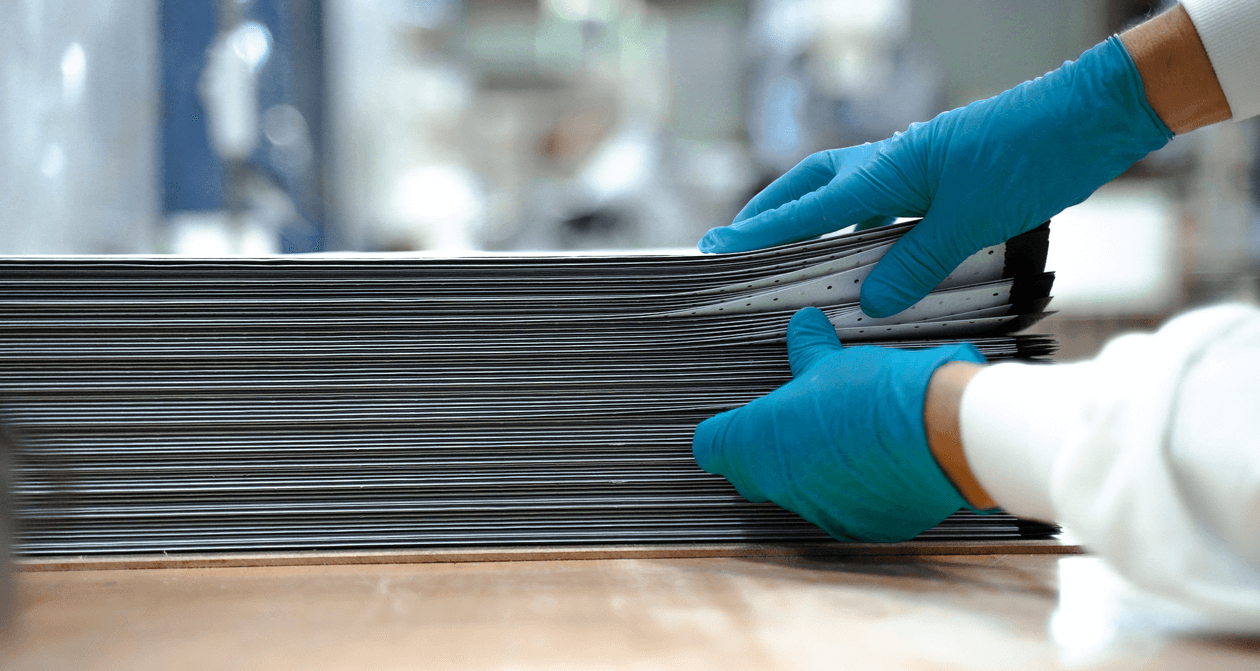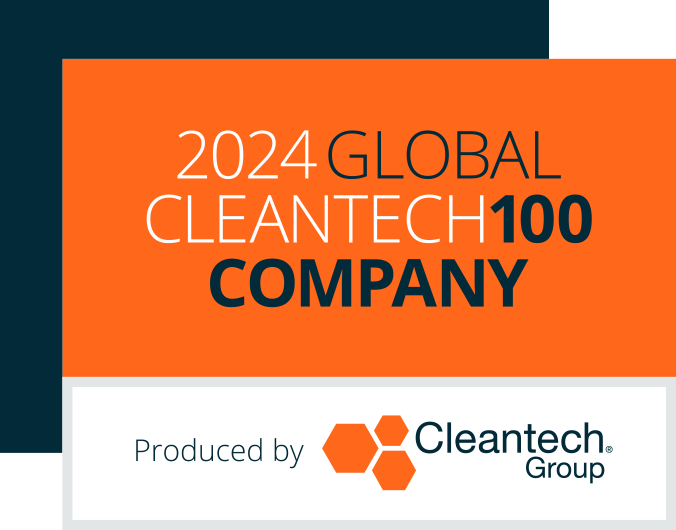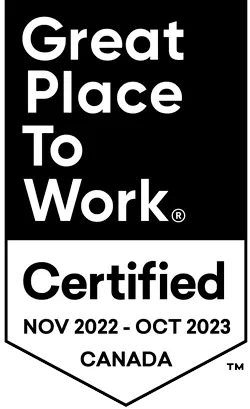- Author: Matthew Stevenson, Chief Revenue Officer, Svante
Solving climate change is simultaneously very simple and very complex. We must either stop using oil, gas, coal, and cement or capture and store all the CO2 they produce.
This imperative was top of mind for me last week at CERAWeek, an annual energy conference bringing together global leaders to advance new ideas and solutions to the most significant challenges facing the future of energy. Svante CEO Claude Letourneau and I were pleased to participate in several panel discussions on advancing the green industrial transition and the need for carbon management.
These conversations reinforced the importance of deploying available solutions to meaningfully tackle these challenges and drive progress at scale in the industrial sectors. However, scalable deployment of key technologies like CCUS cannot and will not happen in a silo. Success demands cross-collaboration, significant public-private investment, and knowledge-sharing across the entire value chain of the CO2 marketplace.
Here are my three key takeaways from CERAWeek 2024:
1. Cross-collaboration is critical to scalable deployment
Given the scale of today’s challenges in bending the greenhouse gas emissions curve by 2030, no single organization or industry will be able to tackle the decarbonization of power, electrifying as much as possible, and managing the CO2 emissions of the industrial sector.
Instead, we must prioritize cross-collaboration and be ready to forge new partnerships globally, across industries and the entire value chain, to accelerate decarbonization and drive innovation for carbon capture and storage.
At CERAWeek, I joined Chevron for a panel discussion on the power of partnership between early-stage and incumbent companies. Our conversation centered around a 2022 pilot program in which Chevron invested, in partnership with the U.S. Department of Energy, in a new technology developed by Svante. It was deployed to capture CO2 emissions at Chevron’s Kern River facility in California’s San Joaquin Valley.
Public-private collaborations like this one provide valuable insights into the success of promising CCUS technologies, which can be leveraged to de-risk and speed up their commercialization and deployment in industries such as refining, pulp and paper, steel, and cement, among others.
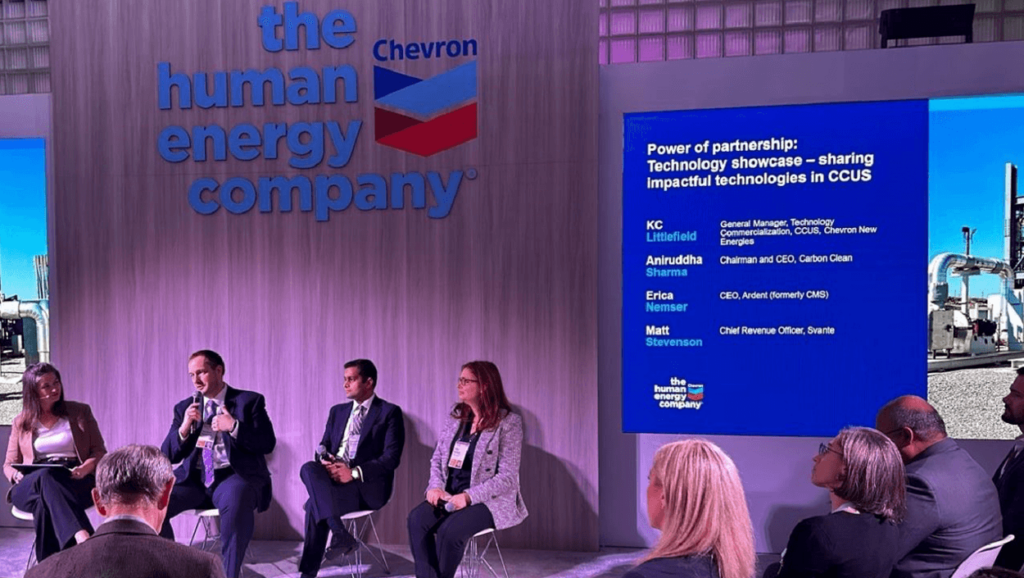
Matthew Stevenson, CRO at Svante, joined Aniruddha Sharma, CEO at Carbon Clean; Erica Nemser, CEO at Ardent; and KC Littlefield, General Manager of Technology Commercialization in Carbon Capture, Utilization, and Storage at Chevron New Energies, for a panel discussion at the Chevron Agora House on impactful CCUS technologies.
Additionally, Svante and Climeworks signed a collaboration and supply agreement in January 2024 to advance commercial-scale direct air capture (DAC) solutions. Climeworks, a provider of direct air capture and storage (DAC+S) solutions, will use Svante’s filter technology to trap CO2 emissions as part of its efforts to develop DAC hubs capable of capturing megatons of CO2 in the United States. The partnership is part of a larger initiative with the U.S. Department of Energy, which selected Climeworks to develop three DAC hubs across the United States.
An essential part of the direct air capture process involves filter material trapping CO2 from the ambient air, and Svante’s filter technology will further enhance the performance of the carbon dioxide capturing process. With the extended collaboration, Climeworks guarantees best-in-class technology supporting its scale-up journey.
This kind of cross-collaboration between businesses and governments is essential to de-risking the supply chain and infrastructure and scaling the deployment of CCUS technology, which will help enable the green industrial transition.
2. Significant investment is needed
To reach net-zero targets laid out by the Paris Agreement, large-scale and sustained investments—potentially amounting to trillions of dollars, according to the Global CCS Institute—are required to scale up the deployment of key technologies, like CCUS.
Reducing harmful pollutants, such as sulfur dioxide and particulate matter often found in industrial post-combustion flue gas, means CCUS projects will contribute to overall air quality. By investing time, money, and talent into partnerships that support first-of-a-kind commercial-scale projects, we can help advance the commercialization of new technologies like CCUS, which will help accelerate the green industrial transition.
As an example of investment in action, Delek U.S., a Svante investor and customer, was recently selected by the U.S. Department of Energy Office of Clean Energy Demonstrations to negotiate a cost-sharing agreement in support of a large-scale Svante carbon capture pilot project at Delek’s Big Spring refinery in Texas. The program provides 70% cost-sharing for up to $95 million of federal funding to assist with project development.
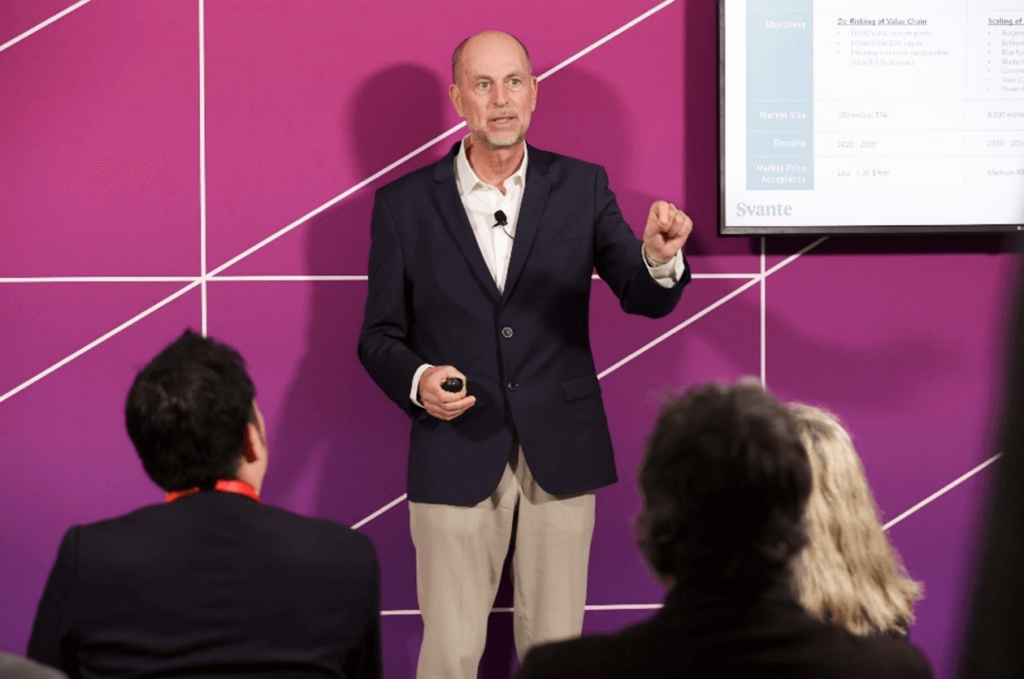
Svante President and CEO Claude Letourneau discusses the future of a sustainable CO2 marketplace at CERAWeek 2024.
At a CERAWeek panel about monetizing CO2, Claude shared key insights on the future of a sustainable CO2 marketplace. This session discussed how the carbon-management industry can be de-risked with government financial support while developing a solid business model that generates revenue from products’ carbon intensity along the supply value chain.
The electric vehicle market came about in part because of a standard implemented initially by California on the carbon intensity of passenger cars, followed by national Corporate Average Fuel Economy (CAFE) standards. CCUS is proven, and CO2 monetization is solvable, especially if backed by creative structures like Contracts for Difference, which enable the market to mature by paying the difference between the relevant carbon price and the actual cost of abating emissions. Establishing a CO2 marketplace is a three-step process:
- Step 1 is to prove the technology works. Svante and others have proven that CCUS technology is viable today at scale.
- Step 2 is delivering at scale—a “build it, and they will come” model. This is where government intervention and support will play a role, just as they have for nearly all industries in their early days, such as the internet, renewables, electric vehicles, and many others. Svante is building a $125 million USD manufacturing facility to support 10 million tons per year of CO2 capture, in line with this mindset.
- Step 3 is paying for carbon. Once government has set rules and pricing for carbon, industrial buyers will no longer bear the risk of the cost to implement CCUS. However, they will want to understand ways to monetize captured carbon.
Svante works with our customers to uncover revenue models that will pay for carbon. We may be in the early days of the carbon-management market, but it’s clear we are making progress on all three steps. As industrials see progress, we will move from a business-to-government to a business-to-business model where an industrial carbon-pricing system will spur an efficient carbon market.
Governments are uniquely able to address the gap between the true social cost of carbon and what companies have to pay today to freely emit. Unlike the tech industry, built without incumbent companies’ resistance to change, carbon capture competes against a past in which emitting carbon was free and easier. In reality, emitting carbon is like using a credit card—sooner or later, we must pay for it.
3. Sharing knowledge across the value chain
Claude also spoke with other leaders from Chevron and Linde to discuss the lessons learned from their respective carbon-management efforts. This conversation served as an essential reminder of the importance of sharing learnings and insights across the CCUS value chain to hasten the common goal of eliminating CO2 emissions and lowering the carbon intensity of products we use daily.
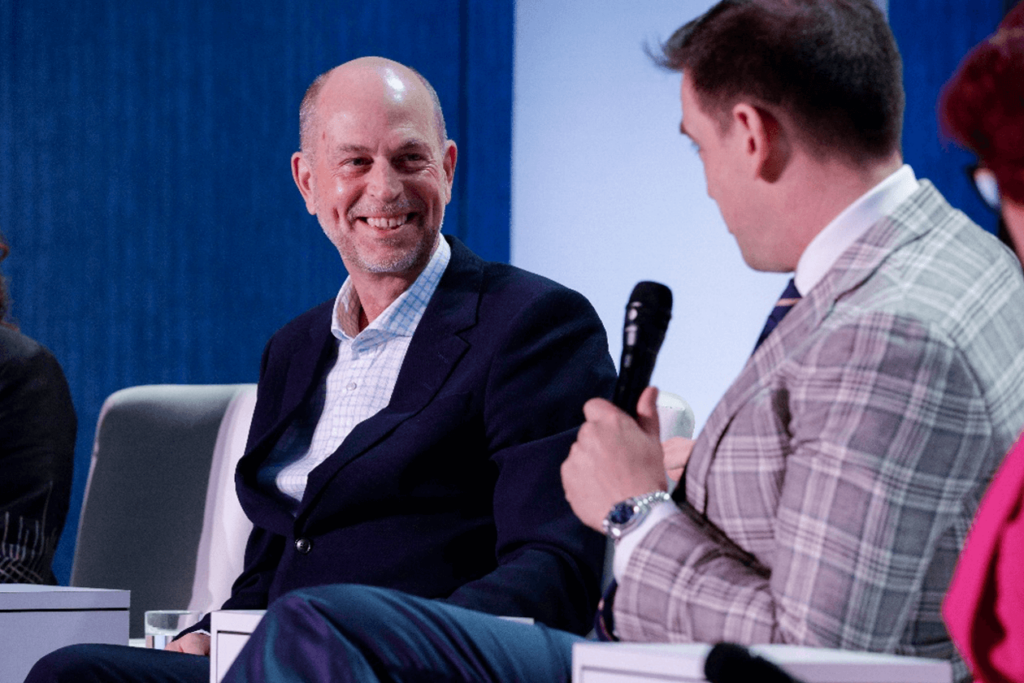
Svante CEO Claude Letourneau joined leaders from Chevron and Linde to discuss learnings and insights from their respective decarbonization efforts.
CERAWeek allowed leaders across the energy ecosystem to come together, share insights and learn from each other, reminding us all how important it is to work together on solutions for both the green industrial transition and the green energy transition.
Over the last few years, we’ve built significant momentum in forging these public and private partnerships and are inspired by recent discussions about reducing unabated fossil fuels and rapidly bending the curve on greenhouse gas emissions by 2030. Now is not the time to be impacted by the uncertainty of the political landscape—or complacency that oil and gas are here to stay for much longer. Time is of the essence, and we need to move swiftly to implement carbon capture at an industrial scale.
Learn more about the possibilities of Svante’s carbon capture and removal technology.
